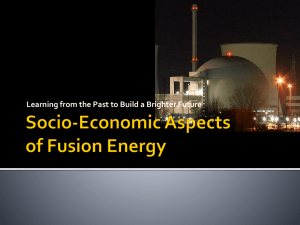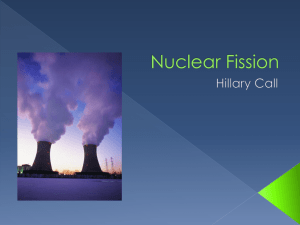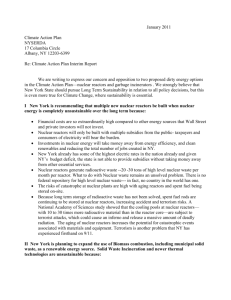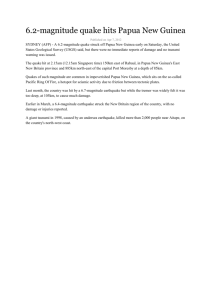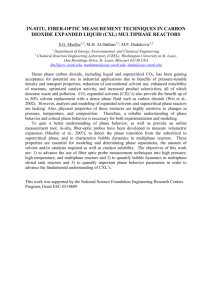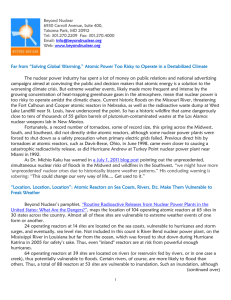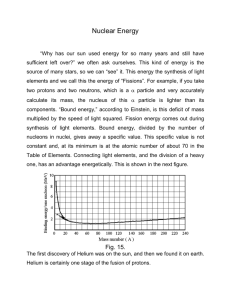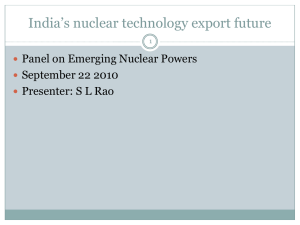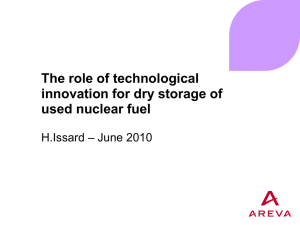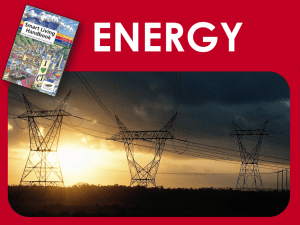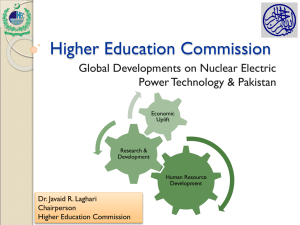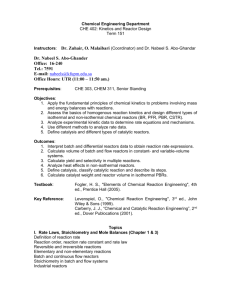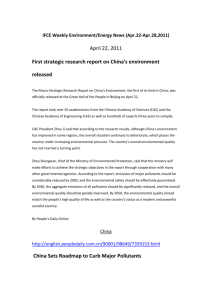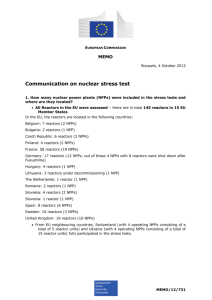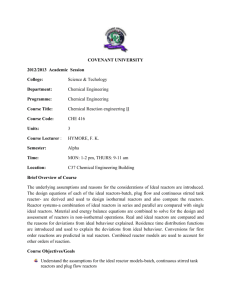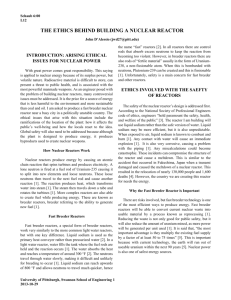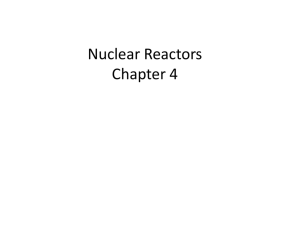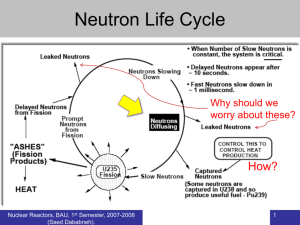Sensible Roles of Nuclear Energy for Nuclear Power in the
advertisement
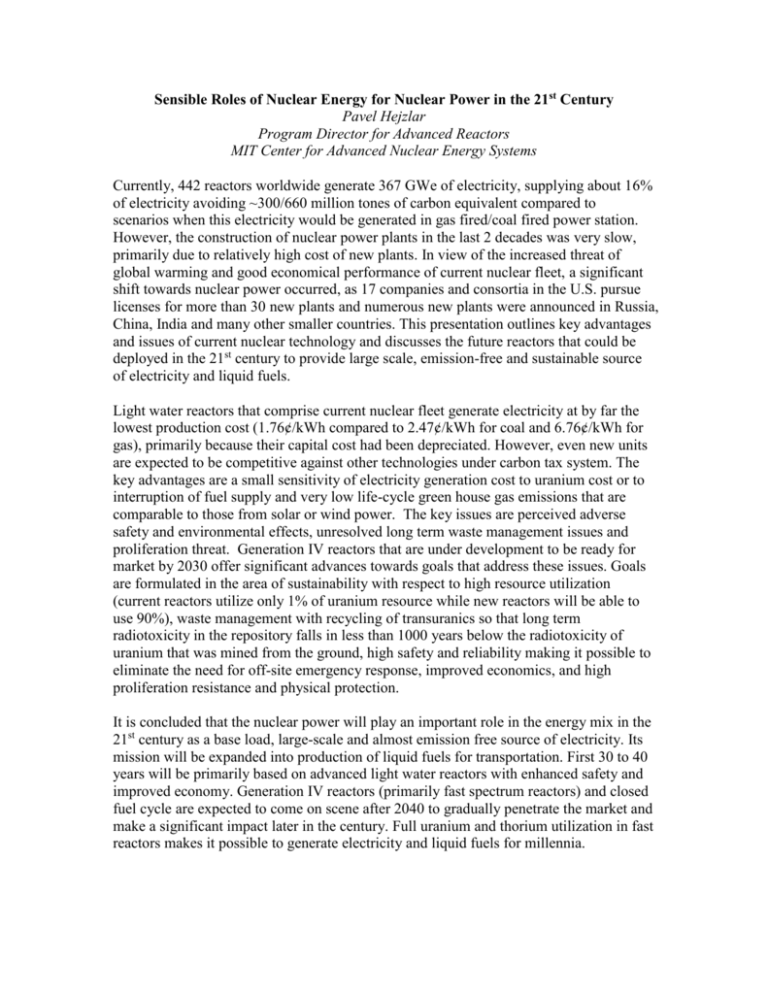
Sensible Roles of Nuclear Energy for Nuclear Power in the 21st Century Pavel Hejzlar Program Director for Advanced Reactors MIT Center for Advanced Nuclear Energy Systems Currently, 442 reactors worldwide generate 367 GWe of electricity, supplying about 16% of electricity avoiding ~300/660 million tones of carbon equivalent compared to scenarios when this electricity would be generated in gas fired/coal fired power station. However, the construction of nuclear power plants in the last 2 decades was very slow, primarily due to relatively high cost of new plants. In view of the increased threat of global warming and good economical performance of current nuclear fleet, a significant shift towards nuclear power occurred, as 17 companies and consortia in the U.S. pursue licenses for more than 30 new plants and numerous new plants were announced in Russia, China, India and many other smaller countries. This presentation outlines key advantages and issues of current nuclear technology and discusses the future reactors that could be deployed in the 21st century to provide large scale, emission-free and sustainable source of electricity and liquid fuels. Light water reactors that comprise current nuclear fleet generate electricity at by far the lowest production cost (1.76¢/kWh compared to 2.47¢/kWh for coal and 6.76¢/kWh for gas), primarily because their capital cost had been depreciated. However, even new units are expected to be competitive against other technologies under carbon tax system. The key advantages are a small sensitivity of electricity generation cost to uranium cost or to interruption of fuel supply and very low life-cycle green house gas emissions that are comparable to those from solar or wind power. The key issues are perceived adverse safety and environmental effects, unresolved long term waste management issues and proliferation threat. Generation IV reactors that are under development to be ready for market by 2030 offer significant advances towards goals that address these issues. Goals are formulated in the area of sustainability with respect to high resource utilization (current reactors utilize only 1% of uranium resource while new reactors will be able to use 90%), waste management with recycling of transuranics so that long term radiotoxicity in the repository falls in less than 1000 years below the radiotoxicity of uranium that was mined from the ground, high safety and reliability making it possible to eliminate the need for off-site emergency response, improved economics, and high proliferation resistance and physical protection. It is concluded that the nuclear power will play an important role in the energy mix in the 21st century as a base load, large-scale and almost emission free source of electricity. Its mission will be expanded into production of liquid fuels for transportation. First 30 to 40 years will be primarily based on advanced light water reactors with enhanced safety and improved economy. Generation IV reactors (primarily fast spectrum reactors) and closed fuel cycle are expected to come on scene after 2040 to gradually penetrate the market and make a significant impact later in the century. Full uranium and thorium utilization in fast reactors makes it possible to generate electricity and liquid fuels for millennia.
